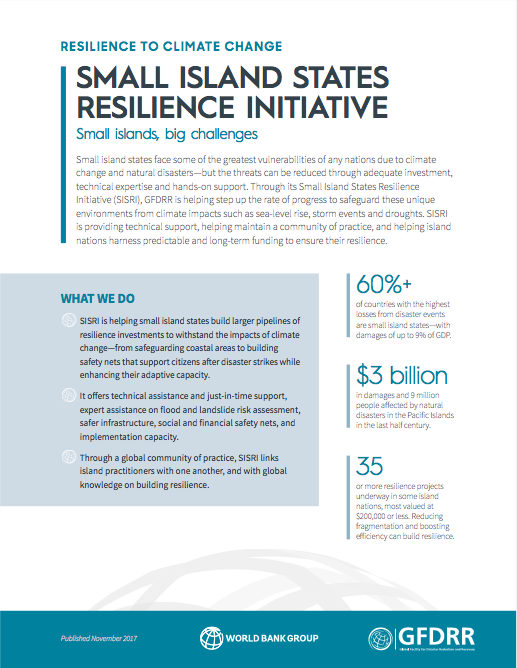Context
-
The Prime Minister of India will launch Infrastructure for Resilient Island States or IRIS, in the presence of leaders from several countries in the ongoing COP26 meeting in Glasgow.
About Infrastructure for Resilient Island States (IRIS)
- A new initiative to make critical infrastructure in small island states resilient against disasters induced by climate change.

- Host Prime Minister of UK and Australia’s Prime Minister, along with the Prime Ministers of Fiji, Jamaica, and Mauritius, countries are likely to benefit from this initiative.
- The new programme for the small island states is part of the Coalition for Disaster Resilient Infrastructure (CDRI), an Indian initiative announced by India at the UN General Assembly in 2019.
- The launch of IRIS is expected to change that situation and give the initiative momentum.
- India, Australia and UK are likely to pledge 10 million dollars each for the project and other CDRI initiatives. Other countries are also likely to contribute. Japan and US have offered support in kind, mainly in technical expertise.
- The programme titled “Infrastructure for Resilient Island States’ will be implemented between 2022 to 2030 in 58 countries located across three geographic regions: the Caribbean, the Pacific, and the Atlantic, Indian Ocean, Mediterranean and South China Sea.
About Small Island States & Climate Change
- Small island states are the most vulnerable to climate change. They face the worst impacts. At the same time, each of their infrastructure is extremely critical to them.
- A larger country, for example, can have five or 10 airports. So, if one or two are damaged in climate disasters, the country can still manage it affairs by diverting its operations elsewhere.
- But many of the small island states have just a single airstrip. If this gets damaged, the country loses its connectivity with the rest of the world. It is therefore vital that these infrastructure in such countries are protected against the vagaries of nature.
- They have to be climate proofed. It is great the work of CDRI is starting with the small island states. These states need it the most, and they have been actively involved in the planning of this programme.
- Many of them face real and growing threats to their very existence from rising seas, and major weather events such as large storms triggered by climate change can knock out critical infrastructure like airports or power supplies and effectively snap their links with the rest of the world.
- These countries are highly susceptible to economic losses due to disasters with average annual losses ranging from 1% to 10% of the gross domestic product (GDP) according to a World Bank report titled ‘Climate and Disaster Resilient Transport in Small Island Developing States.’
- They account for two-thirds of the countries in the world that suffer the highest relative losses due to disasters. Overall, these nations also have the highest multi-hazard risks relative to the size of their capital stock as per the UN Global Assessment Report (2017).

Source: GFDRR - In Kiribati, Marshall Islands, Suriname, Tuvalu and Maldives 60 to 100% of the population lives within only 5m above sea level.
- These regions also face development challenges that constrain their economic prospects such as remoteness to global markets, poor connectivity, lack of economies of scale, inadequate labour-mobility, low levels of development combined with rapid population growth and limited capacity to adapt,” a concept note by CDRI states adding that “their geography and natural resource base offer unique opportunities such as potential for growth of eco-tourism, expansion of fisheries sector, forestry amongst others.
Loss and Damage Mechanism
- On ‘Loss and Damage’ also India will support the stand of least developed countries or the countries most vulnerable to climate change impacts. Loss and Damage is a mechanism by which vulnerable nations will be compensated for irreversible impacts of climate change such as sea level rise, biodiversity loss or extreme weather events. The draft text on loss and damage was weak and couldn’t be finalised during COP 25 in Madrid.
About Coalition for Disaster Resilient Infrastructure (CDRI)
- CDRI was launched as a global partnership to promote resilience in all critical infrastructure anywhere in the world. So far, 25 other countries, including Germany, Italy, Japan, Australia, and the United States have joined this coalition.
- CDRI is the second international collaboration set up by India in the climate change sphere, the other being the International Solar Alliance that has now evolved to the status of a “treaty-based” intergovernmental organisation.
- CDRI hopes to become a knowledge-network through which member countries can learn from each other and adopt best practices in the development of climate-resilient infrastructure. CDRI does not itself aim to create infrastructure, or play the role of a funding agency.
Environment Current Affairs UPSC 2022 : Click Here
Visit Abhiyan PEDIA (One of the Most Followed / Recommended) for UPSC Revisions: Click Here
IAS Abhiyan is now on Telegram: Click on the Below link to Join our Channels to stay Updated
IAS Abhiyan Official: Click Here to Join
For UPSC Mains Value Edition (Facts, Quotes, Best Practices, Case Studies): Click Here to Join
